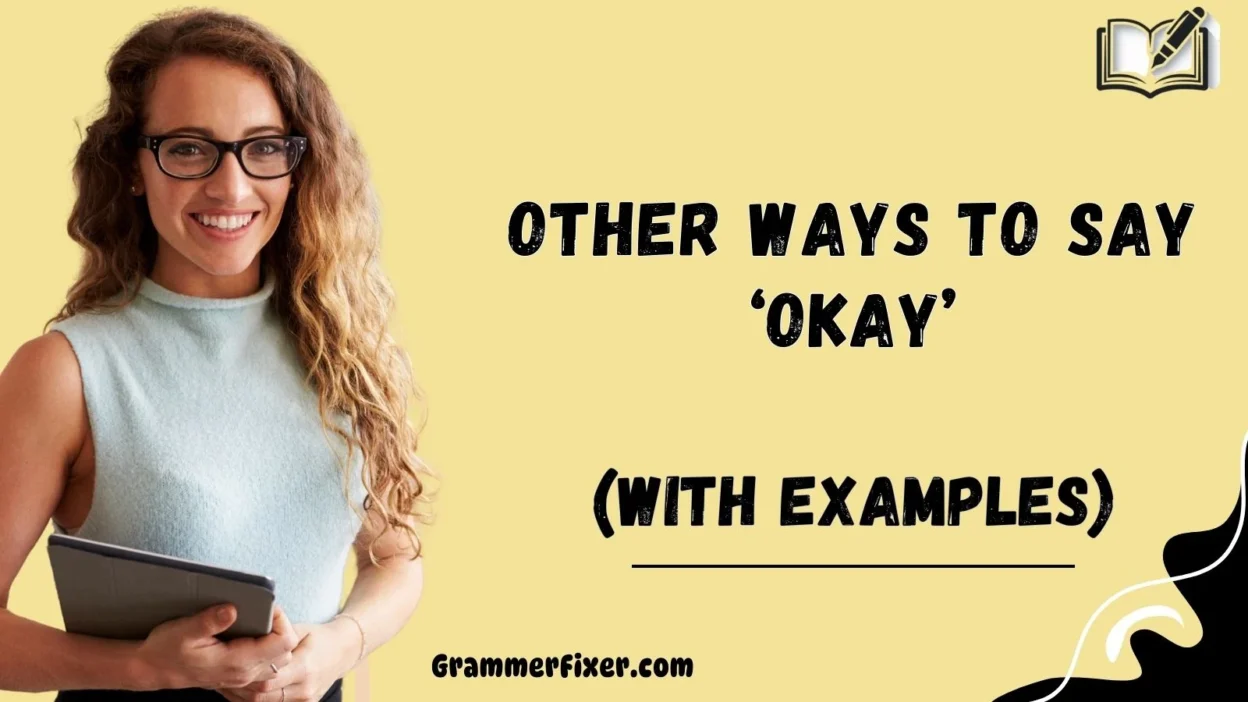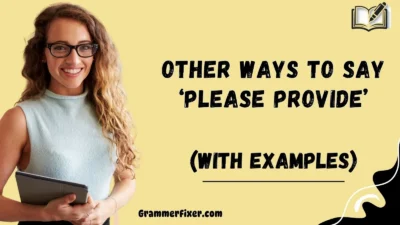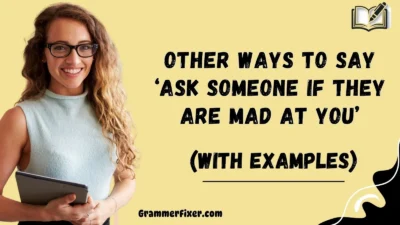Finding the right words when responding to others can transform a simple acknowledgment into something more thoughtful, personal, and warm. While “okay” is a universal go-to, it often feels casual, impersonal, or overused. By choosing alternatives, you can express understanding, agreement, reassurance, and empathy in ways that elevate your communication skills.
Below, we’ll explore 30 meaningful ways to say “okay” with explanations, examples, and guidance on when each works best.
What Does “Okay” Mean?
The word “okay” is often used to show agreement, acknowledgment, or acceptance. It’s a versatile word that can mean “yes,” “I understand,” or even “I’ll do it.” Depending on tone and context, it can sound neutral, polite, casual, or dismissive.
When to Use “Okay”?
You might use “okay” when:
- Acknowledging instructions or directions.
- Confirming agreement in professional or casual settings.
- Showing acceptance of a decision or proposal.
- Responding in quick, short conversations like texts.
Is It Professional/Polite to Say “Okay”?
Yes—but with caution. While “okay” is understood worldwide, in business communication it can sometimes appear too casual, unenthusiastic, or even dismissive. In professional contexts, choosing a more affirmative and confident alternative can show clarity, respect, and engagement.
Pros or Cons of Using “Okay”
Pros:
- Universally understood.
- Short and easy.
- Works in casual texting.
Cons:
- Can sound robotic or uninterested.
- May lack warmth or professional tone.
- Overuse reduces impact.
1. Understood
Meaning: Acknowledges comprehension of information.
Detailed Explanation: This shows you not only heard but also processed the message clearly.
Scenario Example:
“Understood, I’ll finalize the report by tomorrow morning.”
Best Use: Professional emails, formal communication.
Worst Use: Informal chats with friends (may sound stiff).
Tone: Respectful, formal, confident.
2. Noted
Meaning: A formal acknowledgment that information has been received.
Detailed Explanation: Indicates awareness and record-keeping without extra commentary.
Scenario Example:
“Noted, we’ll proceed with the new schedule.”
Best Use: Workplace, project updates.
Worst Use: Friendly conversations (may feel cold).
Tone: Professional, concise.
3. Absolutely
Meaning: Strong affirmation that conveys enthusiasm.
Detailed Explanation: Goes beyond a neutral “okay” by expressing confidence and commitment.
Scenario Example:
“Absolutely, I’ll be at the coffee shop at 5 pm.”
Best Use: Positive confirmations in both professional and casual settings.
Worst Use: When neutrality is needed.
Tone: Enthusiastic, confident.
4. Sounds Good
Meaning: Shows agreement in a friendly, approachable way.
Detailed Explanation: A casual, yet positive acknowledgment that makes responses feel relaxed.
Scenario Example:
“Sounds good, let’s divide the tasks equally.”
Best Use: Team conversations, informal professional chats.
Worst Use: Very formal business emails.
Tone: Friendly, casual, approachable.
5. Agreed
Meaning: Expresses alignment with another person’s point or decision.
Detailed Explanation: Reinforces unity and mutual understanding.
Scenario Example:
“Agreed, the proposal works best for next week’s schedule.”
Best Use: Meetings, decision-making contexts.
Worst Use: Quick texts with friends (may sound stiff).
Tone: Professional, cooperative.
6. Certainly
Meaning: A polite, strong affirmation.
Detailed Explanation: Shows willingness and professionalism, often used in service or business contexts.
Scenario Example:
“Certainly, I’ll assist you with locating that book in the library.”
Best Use: Customer service, professional promises.
Worst Use: Casual texting (may feel overly formal).
Tone: Polite, professional, confident.
7. Yes, Indeed
Meaning: An enthusiastic confirmation.
Detailed Explanation: Adds warmth and personality, making a simple “yes” feel more meaningful.
Scenario Example:
“Yes, indeed, the homemade pie was delicious!”
Best Use: Friendly conversations, casual affirmations.
Worst Use: Serious workplace contexts.
Tone: Cheerful, conversational.
8. Fine by Me
Meaning: Acceptance without resistance.
Detailed Explanation: Indicates agreement with flexibility, showing no objections.
Scenario Example:
“Fine by me, we can reschedule the meeting for next week.”
Best Use: Casual group discussions.
Worst Use: Strictly professional communications.
Tone: Relaxed, agreeable.
9. No Problem
Meaning: Shows willingness and ease in accepting a request.
Detailed Explanation: Reassures the sender that the request is manageable and welcome.
Scenario Example:
“No problem, I’ll pick up the groceries on my way home.”
Best Use: Friendly exchanges, customer service.
Worst Use: Very formal business responses.
Tone: Friendly, supportive.
10. Of Course
Meaning: Strong affirmation that shows natural willingness.
Detailed Explanation: Conveys a sense of readiness and care.
Scenario Example:
“Of course, I’ll provide feedback on your document.”
Best Use: Customer support, personal relationships.
Worst Use: Neutral confirmations where enthusiasm isn’t needed.
Tone: Warm, encouraging.
11. All Right
Meaning: Confirms agreement or permission.
Detailed Explanation: A versatile response that works in both casual and semi-professional settings. It acknowledges acceptance without over-committing.
Scenario Example:
“All right, let’s move forward with the new plan.”
Best Use: Meetings, collaborative discussions.
Worst Use: Formal emails (can sound casual).
Tone: Neutral, cooperative.
12. Very Well
Meaning: Formal way to express acknowledgment.
Detailed Explanation: Often used in traditional or formal contexts, it conveys a polite acceptance of instructions or suggestions.
Scenario Example:
“Very well, I’ll ensure the task is complete by end of day.”
Best Use: Professional settings, formal conversations.
Worst Use: Texting with friends.
Tone: Respectful, formal.
13. Granted
Meaning: Accepting or conceding a point.
Detailed Explanation: This word acknowledges something as true or agreed upon, often when balancing different perspectives.
Scenario Example:
“Granted, the project deadline is tight, but we can request an extension.”
Best Use: Professional debates, discussions, negotiations.
Worst Use: Simple casual chats.
Tone: Thoughtful, balanced.
14. Confirmed
Meaning: Acknowledges and verifies understanding.
Detailed Explanation: Useful when confirming details, schedules, or official matters. It shows reliability.
Scenario Example:
“Confirmed, the meeting will be at 10 a.m. tomorrow.”
Best Use: Scheduling, logistics, official communications.
Worst Use: Relaxed conversations (too formal).
Tone: Professional, precise.
15. I’ll Get It Done
Meaning: Strong commitment to action.
Detailed Explanation: Goes beyond acknowledgment to show responsibility and accountability.
Scenario Example:
“I’ll get it done—expect an update shortly.”
Best Use: Work settings where tasks need ownership.
Worst Use: Polite refusals or neutral acknowledgments.
Tone: Assertive, proactive.
16. Agreed Upon
Meaning: Formal agreement.
Detailed Explanation: Indicates a mutual decision or arrangement has been settled.
Scenario Example:
“It’s agreed upon that we’ll proceed with the proposal.”
Best Use: Contracts, project decisions.
Worst Use: Casual texting.
Tone: Formal, conclusive.
17. Acknowledged
Meaning: Receipt and understanding of information.
Detailed Explanation: Often used in professional or procedural contexts to show something is officially noted.
Scenario Example:
“Acknowledged, I’ll review the outlined policy changes.”
Best Use: Reports, official documents, business communication.
Worst Use: Friendly conversation.
Tone: Formal, procedural.
18. Will Do
Meaning: Casual yet affirmative acceptance.
Detailed Explanation: Short and action-oriented, this shows you’re committed in a relaxed way.
Scenario Example:
“Will do—I’ll send over the updated file by noon.”
Best Use: Team communication, casual workplaces.
Worst Use: Highly formal documents.
Tone: Friendly, efficient.
19. Roger
Meaning: Military-origin phrase meaning “message received and understood.”
Detailed Explanation: Still widely used in radio, aviation, and casual contexts, it signals clarity of communication.
Scenario Example:
“Roger, I’ll check upon that once the report is finalized.”
Best Use: Aviation, technical teams, playful casual use.
Worst Use: Strictly formal workplaces.
Tone: Clear, decisive, slightly casual.
20. Consider It Done
Meaning: Assurance that a task will be completed.
Detailed Explanation: Expresses confidence, reliability, and commitment—a stronger version of “okay.”
Scenario Example:
“Consider it done, I’ll organize the presentation materials.”
Best Use: When making promises or commitments.
Worst Use: Situations where results are uncertain.
Tone: Confident, reassuring.
21. Sure Thing
Meaning: Friendly way to confirm agreement.
Detailed Explanation: Adds a positive and approachable tone to acknowledgment.
Scenario Example:
“Sure thing, I’ll join you at the coffee shop at 5 pm.”
Best Use: Casual and semi-formal chats.
Worst Use: Legal or official communication.
Tone: Friendly, informal.
22. No Worries
Meaning: Reassures that something is not a problem.
Detailed Explanation: Often used to ease tension and show willingness.
Scenario Example:
“No worries, I’ll cover your shift tomorrow.”
Best Use: Customer service, casual chats.
Worst Use: Formal negotiations.
Tone: Relaxed, reassuring.
23. Right On
Meaning: Expresses approval and agreement.
Detailed Explanation: A colloquial phrase that adds excitement and positivity.
Scenario Example:
“Right on, that’s exactly the approach we need.”
Best Use: Casual team settings, motivational contexts.
Worst Use: Professional reports.
Tone: Energetic, informal.
24. You Bet
Meaning: Strong affirmative response.
Detailed Explanation: Conveys confidence and positivity, often used in American English.
Scenario Example:
“You bet, I’ll be there for the industry networking event.”
Best Use: Friendly confirmations.
Worst Use: Formal emails.
Tone: Cheerful, informal.
25. By All Means
Meaning: Gives permission in a polite, encouraging way.
Detailed Explanation: Adds a layer of professionalism while showing openness.
Scenario Example:
“By all means, feel free to use the conference room.”
Best Use: Workplace permissions, customer service.
Worst Use: Texting friends casually.
Tone: Polite, formal.
26. Fair Enough
Meaning: Accepting something as reasonable.
Detailed Explanation: Often used when acknowledging someone’s point of view, even if you don’t fully agree.
Scenario Example:
“Fair enough, I see why you’d prefer that option.”
Best Use: Negotiations, discussions.
Worst Use: Serious task confirmations.
Tone: Neutral, understanding.
27. Deal
Meaning: Agreement or final confirmation.
Detailed Explanation: A decisive, concise way to confirm an arrangement.
Scenario Example:
“Deal, we’ll meet at the coffee shop at 5 pm.”
Best Use: Casual agreements, business deals.
Worst Use: Sensitive conversations.
Tone: Assertive, concise.
28. Naturally
Meaning: Shows something is expected and accepted.
Detailed Explanation: Adds warmth and reassurance, making agreement feel natural.
Scenario Example:
“Naturally, I’ll assist with preparing the presentation.”
Best Use: Supportive conversations, personal relationships.
Worst Use: Strictly neutral responses.
Tone: Warm, thoughtful.
29. Count Me In
Meaning: Enthusiastic confirmation of participation.
Detailed Explanation: Shows eagerness and positive commitment.
Scenario Example:
“Count me in for the upcoming team-building event.”
Best Use: Invitations, team activities.
Worst Use: Formal instructions.
Tone: Enthusiastic, casual.
30. It’s Settled
Meaning: Final confirmation or conclusion.
Detailed Explanation: Signals that a decision has been made and there’s no further debate.
Scenario Example:
“It’s settled, we’ll launch the project next Monday.”
Best Use: Agreements, decisions, final statements.
Worst Use: Casual small talk.
Tone: Final, authoritative.
Conclusion
The word “okay” may be short and simple, but relying on it too often can make your responses feel monotonous or impersonal. By exploring these 30 alternatives, you gain the flexibility to match your tone, context, and intent—whether it’s professional alignment, casual acceptance, enthusiastic agreement, or warm reassurance.
Best Use of Alternatives: Choose expressions that enhance clarity, professionalism, and warmth.
Worst Use of Alternatives: Avoid overuse or applying formal phrases in casual contexts, which can sound forced.
Tone: Adapt your choice to match the relationship, situation, and setting—because words matter, and the right ones can make your communication more engaging, thoughtful, and impactful.



